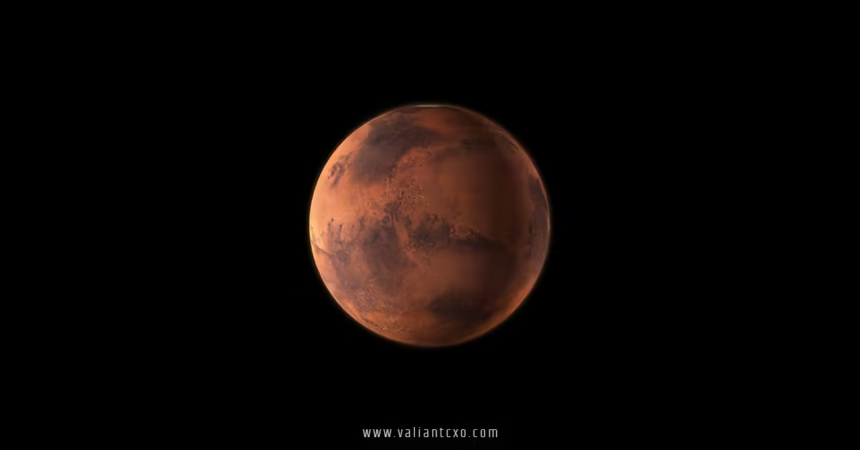Can life exist on Mars according to NASA? That’s the burning question that’s kept scientists—and let’s be honest, all of us space enthusiasts—up at night for decades. Picture this: a rusty red planet, swirling with dust storms, hiding secrets beneath its surface that could rewrite everything we know about life in the universe. NASA, our go-to experts on all things cosmic, has been poking and prodding Mars with rovers, orbiters, and a whole lot of ingenuity. They’ve uncovered clues that make you wonder if we’re really alone out there. In this deep dive, we’ll unpack what NASA has discovered, why it matters, and whether tiny microbes might have called Mars home billions of years ago—or heck, maybe even today.
Let’s kick things off by getting real about the basics. Mars isn’t some lush paradise like Earth; it’s a harsh, frozen desert with an atmosphere thinner than a whisper. But NASA hasn’t given up hope. Their missions have shown that Mars wasn’t always this way. Billions of years back, it had rivers, lakes, and maybe even oceans sloshing around. Imagine dipping your toes in a Martian sea—sounds wild, right? That’s the kind of evidence that’s got experts buzzing about whether life could have sparked up there.
NASA’s Long Hunt for Life on the Red Planet
When we ask, “Can life exist on Mars according to NASA?”, we have to look back at how this quest started. NASA’s journey kicked off in the 1970s with the Viking landers, those plucky pioneers that first touched down on Martian soil. They ran experiments sniffing for signs of life, like gases that microbes might burp out. The results? Mixed bag. Some tests screamed “life,” but others said “nah, just weird chemistry.” It was like finding a half-eaten sandwich in the fridge—could be from last night, or maybe it’s been there since forever.
Fast forward to today, and NASA’s got a fleet of high-tech explorers on the case. Think of them as cosmic detectives, sifting through dirt for fingerprints of ancient organisms. The Curiosity rover, for instance, has been rumbling around Gale Crater since 2012, finding organic molecules—the building blocks of life—in rocks that are billions of years old. Organics aren’t proof of life, but they’re like spotting flour in a kitchen; it hints that baking might have happened.
And don’t get me started on the Mars Reconnaissance Orbiter. This eye in the sky has mapped out ancient riverbeds and spotted seasonal flows that look suspiciously like briny water trickling down slopes. Water is life’s best friend, after all. If Mars had it in abundance once, why couldn’t simple life forms have thrived? NASA says the planet’s early environment was wetter and warmer, with a thicker atmosphere shielding it from the sun’s harsh rays. It’s like Mars had its own cozy blanket back then, making it potentially habitable.
Groundbreaking Discoveries: Can Life Exist on Mars According to NASA’s Latest Findings?
Can Life Exist on Mars According to NASA? : Hold onto your helmets because here’s where things get exciting. Can life exist on Mars according to NASA? Well, in September 2025, they dropped a bombshell that’s got everyone talking. The Perseverance rover, NASA’s star player since landing in Jezero Crater in 2021, snagged a rock sample last year that’s being hailed as the clearest sign yet of ancient life. Dubbed “Cheyava Falls,” this reddish rock is packed with features that scream “microbes might have been here!”
Picture leopard spots dotting the rock—tiny, millimeter-sized patterns that on Earth are often linked to bacterial activity. NASA’s team spent a year analyzing this bad boy, and their peer-reviewed paper in Nature lays it out: these spots could be biosignatures, leftovers from ancient organisms munching on chemicals in a long-gone lake. Acting NASA Administrator Sean Duffy called it “the closest we’ve come to discovering life on Mars.” It’s not definitive—could be plain old geology playing tricks—but boy, does it make your imagination run wild.
Perseverance isn’t just collecting rocks for fun; it’s stashing them for a future Mars Sample Return mission. Bringing those samples back to Earth labs would let scientists poke them with every tool we’ve got. Imagine confirming alien life over coffee in a Houston lab—that’s the dream. Until then, NASA’s saying we need more data, but the evidence is stacking up. They’ve found organic compounds, signs of past water, and now these intriguing textures. It’s like piecing together a puzzle where the picture might show little green (or red?) critters.
Diving deeper, let’s talk about what makes Cheyava Falls so special. The rock formed in a river delta, where sediments piled up billions of years ago. Inside, there are white veins of calcium sulfate—stuff that forms in watery environments—and those poppy-seed-like specks that might be iron phosphates from microbial metabolism. On Earth, similar features in ancient rocks point to life’s early days. Why not on Mars? NASA’s scientists are cautious, stressing that non-biological processes could mimic this, but they’ve ruled out a lot of alternatives after rigorous testing.
Challenges: Why Isn’t Mars Teeming with Life Today?
Okay, so can life exist on Mars according to NASA if the planet’s such a tough nut? Let’s face it—modern Mars is no picnic. Its atmosphere is mostly carbon dioxide, super thin, letting radiation bombard the surface like a cosmic shooting gallery. Without a magnetic field like Earth’s, solar winds strip away any protective layers. Temperatures plunge to -80°F (-60°C) at night, and dust storms can blot out the sun for months. It’s like trying to survive in the Sahara during a blizzard.
But NASA thinks life could be hiding underground. Subsurface pockets might harbor liquid water, shielded from the nastiness above. A 2024 study NASA backed suggests microbes could lurk in meltwater pools beneath icy layers. Think of it as life’s bunker, where geothermal heat keeps things toasty enough for simple organisms. Rovers like Perseverance are drilling down, hunting for these hidden oases.
Radiation is a biggie, though. Without ozone, UV rays fry anything exposed. NASA’s MAVEN orbiter has shown how Mars lost its atmosphere over eons, turning a potentially livable world into a barren one. But if life got a foothold early on, it might have adapted or retreated deep. Rhetorical question: Could extremophiles—those tough bugs that thrive in Earth’s harshest spots—have Martian cousins? NASA says it’s possible, drawing parallels to Antarctic dry valleys or deep-sea vents.
Past vs. Present: Can Life Exist on Mars According to NASA’s Historical Data?
Flipping back the clock, NASA’s got mountains of data showing Mars was once a wet wonderland. The Opportunity rover, before it bit the dust in 2019, found hematite spheres—blueberries, they called ’em—that form in watery conditions. Curiosity detected methane spikes, which could come from geological activity or, fingers crossed, biology. Methane on Earth? Mostly from living things like cows and swamps.
Jezero Crater, Perseverance’s stomping ground, was a lake bigger than Tahoe billions of years ago. Sediments there preserve the story of a habitable era. NASA’s saying that if life existed, it’d be microbial—nothing fancy like dinosaurs. But even that would be huge! It’d mean life isn’t unique to Earth, sparking questions about panspermia: Did life hitch a ride between planets on meteors?
Comparing to Venus or Europa, Mars stands out as the most Earth-like sibling. NASA’s pushing for more missions to drill deeper, literally. The ExoMars rover, a collab with ESA, is set to hunt for biosignatures underground. Can life exist on Mars according to NASA? Their answer: Not sure yet, but the odds are better than ever.
Future Prospects: What NASA’s Planning Next
Looking ahead, can life exist on Mars according to NASA’s roadmap? They’re gearing up for human missions in the 2030s, part of the Artemis program. Astronauts could dig trenches, analyze samples on-site, and maybe even find fresh evidence. But the holy grail is sample return. Perseverance has cached over two dozen tubes, waiting for pickup. Budget woes aside, NASA’s committed to bringing them home.
Imagine the tech: Advanced spectrometers spotting amino acids or fossilized cells. Analogies help here—it’s like forensic science on a planetary scale, CSI: Mars. NASA’s also eyeing ice caps and lava tubes as prime spots for preserved life. A recent paper suggests dusty ice could melt into habitable pools. Subsurface life might even produce detectable gases.
But let’s keep it real: Finding life would change everything. It’d fuel debates on ethics—do we terraform Mars if it’s got natives? NASA’s approach is methodical, building trust with transparent data. They’re not hype machines; they’re scientists sharing facts.
Everyday Implications: Why Should You Care If Life Exists on Mars According to NASA?
You might think, “Cool, but how does this affect my coffee run?” Fair point. But discovering life on Mars could unlock biotech secrets—imagine medicines from Martian microbes. It’d inspire kids to pursue STEM, fostering innovation. Plus, understanding Mars’ climate flop helps us tackle Earth’s issues, like global warming. NASA’s insights are gold for sustainability.
In a conversational nudge: Ever stared at the stars wondering if we’re alone? NASA’s Mars work brings that closer to an answer. It’s not just data; it’s hope.
Wrapping It Up: Can Life Exist on Mars According to NASA?
So, can life exist on Mars according to NASA? The verdict’s still out, but the evidence is tantalizing. From ancient lakes to leopard-spotted rocks, NASA’s missions paint a picture of a once-habitable world where microbes might have flourished. Perseverance’s 2025 bombshell amps up the excitement, hinting at biosignatures that could prove we’re not the universe’s only tenants. Challenges like radiation persist, but subsurface hideouts offer promise. As NASA pushes for sample returns and human boots on the ground, the future’s bright—or should I say, red? Dive into this yourself; who knows, the next big discovery might inspire you to reach for the stars. Keep dreaming big—the cosmos is waiting.
FAQs
What evidence has NASA found that suggests life could exist on Mars according to NASA?
NASA’s Perseverance rover discovered a rock with potential biosignatures like leopard spots, possibly from ancient microbes, in a 2025 analysis. This builds on organics and water traces from earlier missions.
Is there current life on Mars, or just past possibilities when asking can life exist on Mars according to NASA?
NASA leans toward past microbial life billions of years ago, but suggests subsurface pockets might harbor life today, shielded from harsh conditions.
How does NASA’s Perseverance rover contribute to the question of can life exist on Mars according to NASA?
It collects samples from ancient deltas, like the Cheyava Falls rock, showing chemical signs that could indicate biological activity, pending Earth-based confirmation.
What challenges make it hard for life to exist on Mars according to NASA?
Thin atmosphere, extreme cold, and radiation top the list, but NASA notes early Mars was wetter, potentially allowing life to start before conditions worsened.
When might we get definitive answers on can life exist on Mars according to NASA?
With sample return missions planned for the 2030s, NASA hopes lab analysis will confirm or debunk biosignatures, revolutionizing our understanding.
For More Updates !! : valiantcxo.com


